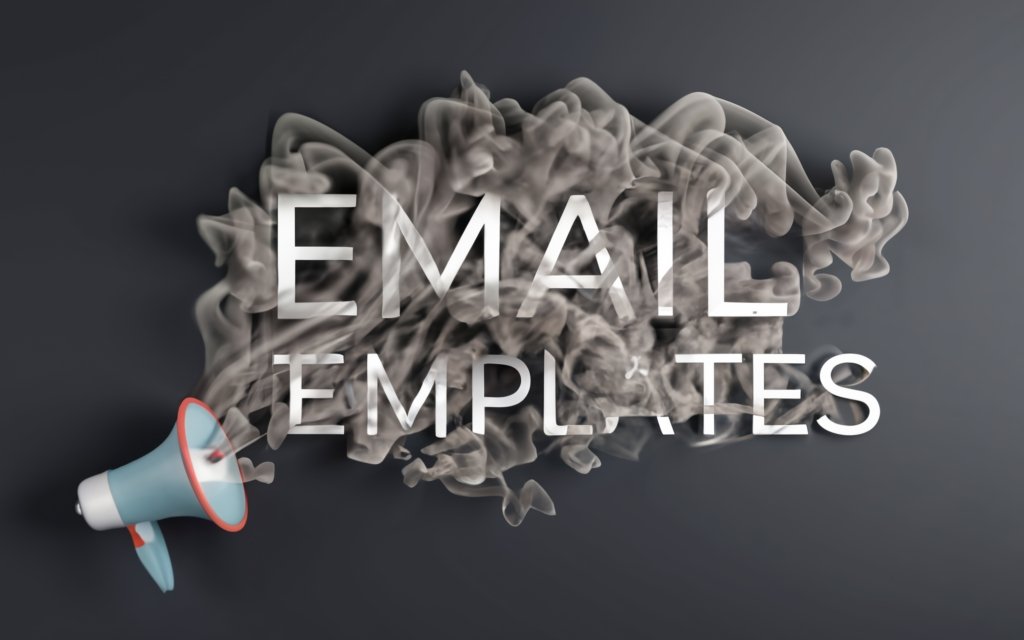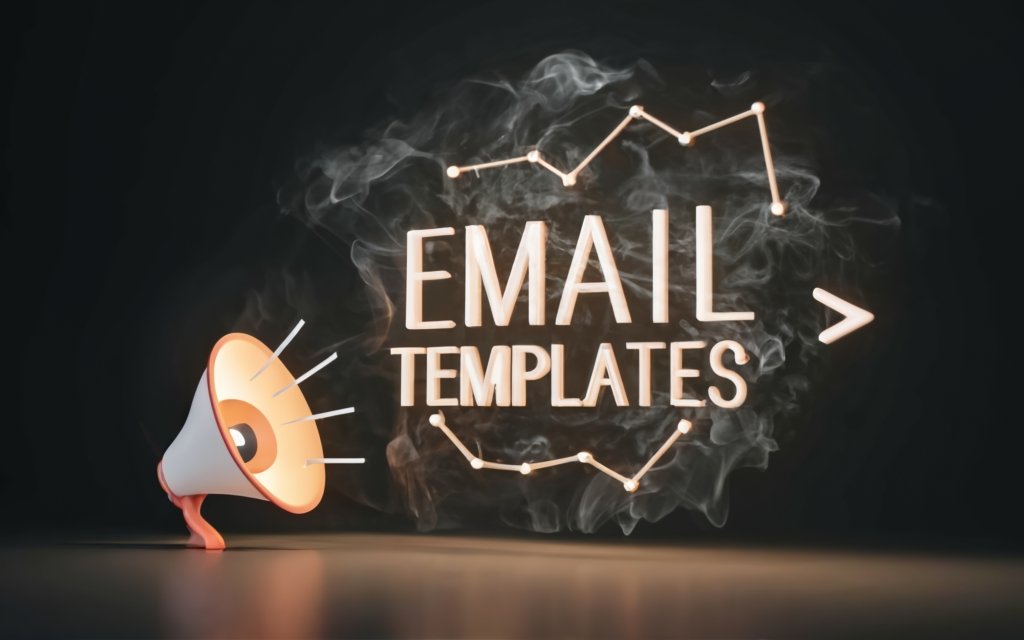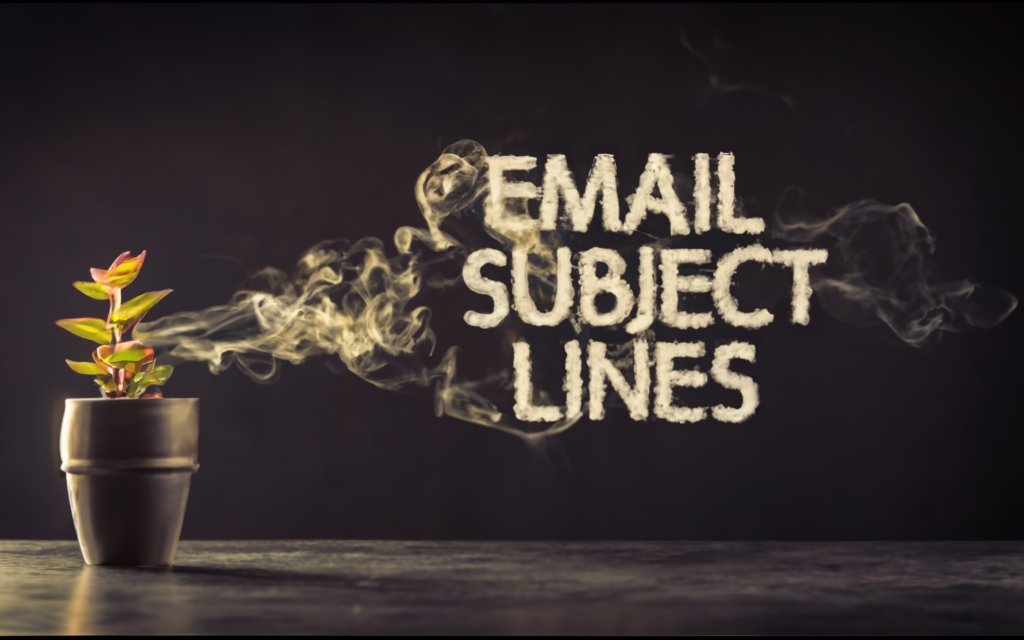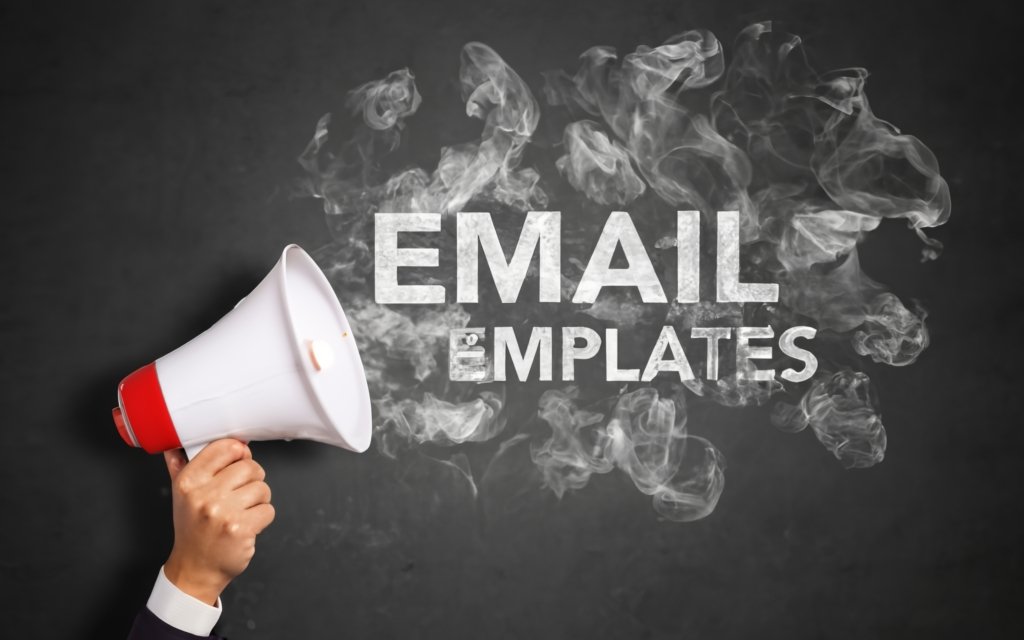Asking for online reviews is crucial, but doing it right takes skill. Master the art and science of review requests with this comprehensive guide. We break down ideal timing, proven email templates by industry, subject line best practices, response rate tips, future trends, and more. Whether you need help getting Google reviews, Yelp recommendations, or video testimonials, these actionable techniques will transform customer feedback and power your growth. By the end, you’ll understand how properly crafted review emails build loyalty, improve SEO, and give your business an unbeatable competitive edge. It’s time to start proactively managing your online reputation and maximizing the impact of reviews.
Why Review and Testimonial Emails Are Critical for Business Growth
In today’s digital world, online reviews and testimonials have become indispensable for brands looking to build credibility, increase conversions, and outpace competitors. With over 87% of consumers saying they read reviews before making purchase decisions, optimizing your review and testimonial strategy is no longer optional – it’s absolutely essential for business growth.
Here are 5 key ways collecting and showcasing customer feedback can transform your business:
Build Credibility and Social Proof
Positive reviews act as social proof that you deliver on your promises. They establish credibility in the eyes of prospective customers who don’t know you yet.
In fact, 88% of consumers say they trust online reviews as much as personal recommendations. Even a few great reviews can rapidly accelerate trust in your brand.
Turn Happy Customers into Brand Promoters
Satisfied customers can become vocal advocates who actively promote your business across their social circles.
Consider that over 92% of consumers say they’re more likely to trust a local business if it has positive reviews. If you consistently delight customers, they’ll pay it forward with referrals and recommendations.
Leverage reviews to spotlight your happiest customers while positioning your business as a credible industry leader.
Increase Conversion Rates and Sales
The power of reviews also directly translates into higher conversions and revenue.
According to BrightLocal’s Local Consumer Review Survey, over half of consumers will only use a business if it has at least a 4 star rating.
Similarly, 72% are more likely to purchase after reading favorable reviews. Reviews literally make or break purchase decisions.
Improve Local SEO and Online Visibility
While reviews influence customers, they also carry significant weight with search engines like Google.
In fact, Google actively scrapes and displays reviews in local packs and knowledge panels. More reviews lead to higher local rankings and visibility for relevant searches.
For instance, Moz found a strong correlation between the number of online reviews and local search ranking. Reviews are a crucial local SEO signal.
Outperform Competitors
In competitive markets, customers have multiple options to choose from. Reviews and testimonials give you an opportunity to stand out.
Over 68% of customers will select a higher rated competitor if businesses have differing review profiles. Reviews let you showcase why customers should pick you over alternatives.
For example, take a look at how this hair salon leverages reviews to differentiate themselves from local competitors:
!hair salon reviews example
The strategic use of reviews establishes them as the premier local choice.
In summary, here are 5 compelling reasons why actively collecting and promoting reviews should be integral to your growth strategy:
- Reviews build trust and credibility with prospective customers.
- Happy customers drive referrals, word-of-mouth marketing, and brand advocacy.
- More positive reviews directly translate into higher conversion rates and sales.
- Reviews improve visibility and search engine rankings, especially for local SEO.
- You can use reviews to outshine competitors within your niche.
Adopting a proactive approach to managing your review and testimonial profile is no longer optional for success. The businesses embracing user-generated feedback will ultimately gain a decisive competitive edge.

When to Send Review and Testimonial Requests
Timing is everything when it comes to asking customers for reviews and testimonials. You want to catch them when they’re most enthusiastic about your business and motivated to leave feedback.
Here are 6 of the best times to reach out for reviews:
Right After a Positive Customer Experience
One of the best times to request a review is right after a customer has had an exceptionally positive experience with your product or service. This could be:
- Right after a great customer support interaction where an issue was resolved quickly and effectively.
- Immediately following an appointment or visit where the customer was delighted with the entire experience.
- Moments after an online purchase when the customer is excited to receive the product.
The key is to catch them when the positive emotions are strongest and most likely to translate into glowing praise. Strike while the iron is hot!
According to research by PowerReviews, over half of customers are most likely to leave a review within 2 weeks of a purchase or service experience. Don’t let too much time pass.
After Onboarding or Free Trial Completion
For SaaS companies, online course creators, and other subscription-based businesses, requesting reviews after onboarding or free trial completion is advised.
At this point, customers have experienced your core offering and formed initial impressions. If you wowed them, they’ll be eager to express their satisfaction.
According to Appcues, over 75% of users decide whether to stick with a SaaS after onboarding. Reviews from delighted users can convince others to commit long-term.
Similarly, free trial users are weighing whether to convert and become paying customers. Positive reviews provide the social proof needed to drive conversions.
With Purchase Confirmation and Thank You Emails
Post-purchase is another opportune time to ask for reviews. This is when customers are feeling good about starting to use your product or service.
Insert a friendly review request into your purchase confirmation or thank you emails. For example:
“Thanks for your purchase! We hope you love [product]! Would you mind taking a few minutes to leave a review on our website? Your feedback helps other customers make purchasing decisions.”
Reviews requested through confirmation emails see higher response rates because they connect instantly while the purchase is top of mind.
After Providing Excellent Customer Service
Has your support team gone above and beyond to assist a customer? Once an issue is fully resolved and the customer is completely satisfied, it’s the ideal chance to turn them into a brand advocate.
Reach out to let them know how much you appreciate them and ask if they’d be willing to share a few words about the great service they received. Even a brief testimonial can be impactful.
93% of customers say their customer service experience impacts their overall brand loyalty, so delight them!
When Customers Mention Your Brand on Social Media
Social media presents a unique opportunity to identify happy customers in real-time. If someone tweets about enjoying your product or checks-in at your store on Facebook, immediately reach out.
Thank them for the mention and ask if they’d like to expand on their positive comments in a review. This personalized outreach makes customers feel valued.
Just make sure your review request comes across as friendly, not salesy. Authenticity is key on social platforms.
During Customer Check-Ins or While Closing Accounts
Regular customer check-ins present a natural opportunity to ask how you’re doing and request feedback.
You might say, “We appreciate you as a customer. Have you been satisfied with our services overall? We’d love to hear your thoughts on how we can improve.”
Similarly, when customers are closing accounts, ask why and if they’d be willing to leave some constructive criticism that will help you improve. Taking an interest in their experience, both good and bad, leaves a positive impression.
In summary, the best times to request reviews are:
- Immediately following an extremely positive customer experience.
- During the onboarding process or after a free trial.
- In purchase confirmation and thank you emails.
- Right after resolving issues and providing exceptional service.
- When customers mention you on social media.
- During customer check-in conversations.
- While handling account closures.
The common thread is catching customers when they are most enthusiastic and engaged with your business. Time your review requests carefully for the best results.

How to Politely Ask for Reviews and Testimonials
When asking customers for reviews, being thoughtful and polite in your approach is crucial. You want to come across as genuine, not pushy or aggressive. Follow these tips to make effective, courteous review requests:
Be Genuine and Personalize Your Request
Sincerity goes a long way. Avoid sounding robotic or formal when asking for feedback. Instead, be warm and speak conversationally, like you would with a friend.
Personalizing your outreach also makes a difference. Address customers directly by name and refer to previous interactions or purchases they’ve made. This shows you value them as individuals, not faceless transactions.
For example:
“Hi [customer name], I hope you’ve been enjoying [product] since purchasing it last month. As the founder, I’d love to hear your honest thoughts on how we can improve it even more. Your insights would mean a lot!”
Remind Customers of Their Positive Experience
Before requesting a review, subtly remind customers of the positive experiences they had with your product or service. This puts them in the right mindset to provide praise.
Jog their memory by mentioning specific interactions, resolutions, or standout moments that made them happy. Help them recall why they enjoyed working with you.
For instance:
“I know you were thrilled with how our support team quickly resolved that technical issue you ran into last week. We strive to deliver 5-star service to all our customers. If you were satisfied, would you mind leaving us a review?”
Explain How Their Feedback Helps Your Business
Customers are more willing to leave reviews if they understand the value. Explain how their insights and testimonials can directly help your small business to improve and grow.
Be transparent that positive reviews attract new customers, while constructive criticism helps you address problems. Your request should demonstrate appreciation for their time and impact.
For example:
“Your feedback allows us to keep improving our products and sharing them with more customers like you. Leaving a review only takes a minute but makes a huge difference for a small business like ours!”
Make It Quick and Easy to Leave Reviews
You significantly boost review response rates by removing all friction from the process. Don’t just ask for reviews – provide the direct links right in your email or text message.
For example, include a one-click Google Review link or embed a review form they can fill out on the spot. Eliminate any extra steps for customers.
Streamlining review requests also means following up via multiple channels. Send reminders by email, text, social media posts, and in-person. Omnichannel outreach improves your chances.
Offer an Incentive or Exclusive Discount
While incentives shouldn’t be overused, they can be worthwhile perks for leaving reviews. Offer customers a coupon code, free gift card, or entry into a giveaway in appreciation for their feedback.
Just be sure to follow FTC guidelines on disclosing incentives when using reviews for promotional purposes. Never pay expressly for positive reviews.
Incentives show customers their time is valued while putting your business top of mind for future purchases.
Follow Up with Customers Who Agreed to Review
Even when customers agree to submit reviews, busy lives often get in the way. Gently follow up via email or text if they haven’t left their promised review within a week or two.
A personalized nudge reminds them of their commitment without being pushy. Just make the review links easily accessible again to complete the process.
Review Request Etiquette
While you want reviews, there’s a right way and wrong way to ask. Avoid coming across as overly pushy or aggressive.
Avoid Being Pushy or Aggressive
Never harass customers to leave reviews if they decline your initial request. Repetitively pestering them will damage your brand reputation.
Similarly, avoid manipulative tactics like guilt-tripping. You want authentic feedback given voluntarily, not through coercion.
Don’t Incentivize Fake or Dishonest Reviews
Attempting to buy reviews or bribing for praise with rewards is unethical. It can also get your business suspended from review platforms.
Legitimately earned positive testimonials carry far more weight. Focus on delighting rather than deceiving customers.
Respect Customers’ Decisions if They Decline
If customers don’t feel comfortable leaving a review, accept their decision graciously. Forcing the issue usually backfires.
Your persistence could even inadvertently incentivize negative reviews from annoyed customers. Know when to let it go.
Use Different Channels Like Email, SMS, Social Media etc.
omni-channel approach prevents you from over relying on one method. But don’t overdo it either.
Too many review requests from too many sources border on harassment. Strike the right balance based on customer preferences.
In summary, a courteous approach that makes leaving reviews simple and satisfying will turn happy customers into loyal advocates. By following review etiquette, you build relationships – not just ratings.
Email Templates and Examples by Industry
When crafting review and testimonial request emails, industry-specific templates tend to perform better than one-size-fits-all approaches.
Tailoring your language, offers, and calls-to-action to your niche helps create relevance and increase response rates.
Here are review email template examples and suggestions for various industries:
General Review Request Email Templates
Every business needs reviews on widely-used platforms like Google, Facebook, Yelp, and Amazon.
Here are some all-purpose templates to request reviews on the major sites:
Templates for Google, Facebook, Yelp, and Amazon Reviews
- “Would you mind taking a minute to review us on [Google/Facebook/Yelp/Amazon]? Your feedback helps us improve and lets others know what to expect. Thanks in advance!”
- “We’re aiming for 100 Google reviews this month. If you had an awesome experience, please consider leaving us one here: [link]”
- “Thank you for your purchase! Was this everything you hoped for? We’d greatly appreciate if you can share your experience on [Google/Amazon/etc] to help future shoppers.”
- “Would you recommend us to others? If so, posting a review on [Google/Facebook/Yelp] would really mean a lot. Just click here: [link]”
Service Industry Email Templates
Service businesses rely heavily on reviews to showcase expertise and quality. Use industry-specific details in your outreach.
Home Services, Hospitality, Healthcare, Legal, Wedding Services
- “Hi [name], were you satisfied with the [plumbing repairs]? Please take a minute to leave a review so other homeowners can hire us with confidence!”
- “We hope you enjoyed your hotel stay. If our staff provided an exceptional experience, would you please leave us a review on TripAdvisor?”
- “Thank you for trusting [law firm] with your case. We’d appreciate if you can share your experience on Avvo or Google to help other clients choose the right firm.”
- “Your wedding was stunning! If we met your expectations as your florist/photographer/coordinator, would you leave a review to help other brides?”
Product Industry Email Templates
For ecommerce businesses, remind customers of the specific items purchased and focus on product performance.
Ecommerce, SaaS, Automotive, Real Estate
- “Are you enjoying the [product] you purchased from our store? We’d love to hear your thoughts in an Amazon review. Your feedback helps fellow customers make informed decisions.”
- “Thanks for trying [software]! How are you finding the features compared to other tools you’ve used? Please share your experience in a review on Capterra or G2.”
- “Congratulations on your new [car make/model]! How’s it handling so far? Please consider leaving a Google review to let others know what you think of your purchase.”
- “We hope you’re loving your new home. If we met your needs as a buyer, would you take a minute to review us on Zillow or Realtor.com?”
Customer Support Email Templates
For CX teams, testimonials from happy customers can be extremely convincing.
Addressing Negative Reviews, Thanking Positive Reviewers, Soliciting Feedback, Review Requests for Employees
- “I noticed your negative review about [issue]. We’re so sorry for the poor experience and are actively making improvements. Please let us know if we can still address your concerns in any way.”
- “Thank you for your kind words about our support team in your recent review! We really appreciate you taking the time to highlight the great service you received.”
- “As a valued customer, you know our products better than anyone. Would you be open to giving product feedback so we can improve? Your thoughts would be invaluable.”
- “Hi [name], you assisted [customer] last week and they were thoroughly impressed. Would you be comfortable providing a written testimonial or video clip that we can use as an employee highlight?”
Incorporating industry details into your review request emails makes the messaging more relevant and compelling. Try personalizing these templates to resonate with your specific niche and audience.

Subject Line Ideas and Best Practices
The subject line is the first impression your review request email makes. An engaging, benefit-focused subject line can dramatically improve open rates.
Here are tips for writing effective subject lines:
Be Clear, Personalized, and Highlight Value
Avoid vague subject lines that could be perceived as spam. Be explicit that your email is a request for customer feedback.
Personalizing the subject line with the customer’s name also improves open rates by 13% according to Experian.
Convey value by mentioning a benefit, offer, or compelling reason to open like “Earn 20% off your next order.”
Hook Interest with Questions, Stats, or Offers
Pique curiosity by beginning subject lines with “Did you know?” or “Quick question:” followed by an intriguing stat or query.
For example:
- “Did you know your review could earn 20% off?”
- “Quick question: On a scale of 1-10, how would you rate our service?”
You can also highlight limited-time promotions to create urgency.
Avoid Sounding Salesy, Pushy, or Spammy
Desperate-sounding subject lines turn customers off and may be flagged as spam. Avoid:
- ALL CAPS
- Too many exclamation marks!!!
- Overpromising benefits
- High-pressure tactics like “Last chance for bonus!”
Keep language conversational, sincere, and subtle.
A/B Test Different Subject Lines
No single subject line will work perfectly for every customer. Leverage A/B testing to experiment with different options.
Try tweaking these variables:
- Personalization: First name vs. full name vs. company name vs. no name
- Length: Single short phrase vs. full sentence
- Offer highlighted: Discount vs. gift card vs. contest entry vs. none
- Word choice: “Review” vs. “Feedback” vs. “Experience” etc.
Analyze open and response rates to determine winners.
Power Words and Phrases for Subject Lines
Leverage power words that spark interest and drive action. For example:
Action Verbs
Discover
Unlock
Maximize
Improve
Adjectives
New
Free
Valuable
Helpful
Honest
Adverbs
Easily
Quickly
Instantly
Immediately
Questions
Want to win?
Ready to try?
Like saving money?
Avoid routine language and overused phrases like “Leave us a review” or “Give us your feedback.” Frame your subject line in a fresh, compelling way that stands out.
In summary, strong review request email subject lines:
- Clearly convey the intent
- Personalize to the recipient
- Highlight concrete value
- Use power words and phrases
- Spark curiosity
- Avoid aggressiveness
Subject lines make first impressions in crowded inboxes. Take the extra time to craft ones optimized for your audience and goals.

Tips to Improve Open and Response Rates
Well-crafted review request emails are only effective if recipients open and act on them. Here are proven techniques to boost open and response rates:
Send From a Personalized Email Address
Generic addresses like [email protected] are easy to ignore. Instead, send from a personalized team member’s email like [email protected].
According to Campaign Monitor, personalized sender names increase open rates by 20%.
Make sure name and email match to avoid skeptics and spam filters.
Follow Up With Non-Responders
One request is often not enough. Follow up 2-3 weeks after your initial email to remind busy customers.
Segment non-responders and customize your follow-up language. Test subject lines like “John, did you get my request?” and “Thoughts on improving our service?”
According to Venture Harbour, follow-up emails get 3x higher response rates on average. Don’t give up after one attempt.
Make Sure Link and Call-To-Action Work
A broken review link or non-functional call-to-action button will tank responses. Test every link prior to launch.
Check periodically to ensure links never break. Make them short and use link trackers to monitor clicks.
Place your CTA front-and-center and make it visually stand out through color, size, and whitespace. Maximize visibility.
Test Different Request Styles and Timing
What works for one customer won’t work for all. Try various approaches to find your optimal mix.
A/B test more formal vs. casual language, longer vs. shorter copy, and humor vs. professional tone.
Vary whether you ask immediately post-transaction or weeks after. Look for patterns in what resonates best.
Leverage Review Management Software
Tools like Grade.us streamline sending and tracking review requests across multiple platforms.
Automate follow-ups based on customer actions and integrate advanced analytics to optimize conversions.
Software also enables features like review landing pages, privileges for top customers, and omni-channel collection.
Managing and Displaying Customer Reviews
Merely gathering reviews isn’t enough. You also need to manage what you collect and showcase it effectively.
How to Respond to and Analyze Reviews
- Thank customers for positive feedback and address concerns for negative reviews.
- Track review volume, sentiment, keywords, and patterns over time.
- Use reports to identify strengths, weaknesses, and opportunities.
Legally Using Incentivized Reviews for Marketing
- Clearly disclose if reviews were obtained via incentives. Don’t mislead.
- Avoid highlighting only incentivized reviews. Mix with organic testimonials.
- Check FTC guidelines on proper disclosure.
Best Practices for Showcasing Testimonials
- Curate relevant excerpts rather than full paragraphs of text. Concise stands out.
- Use photos of real customers, not stock imagery. Authenticity is preferable.
- Place selectively on landing pages, case studies, and anywhere social proof is valuable.
Automating Review Request and Follow-Up
- Use review management software to get the timing and personalization right at scale.
- Set up sequences, triggers, and workflows to monitor and nurture accounts.
- Integrate systems like CRM and marketing automation for a closed loop process.
In summary, improving open and response rates requires both art and science. Experiment relentlessly while leveraging automation to find the optimal intersection.

The Future of Review Marketing
The strategies and impact of online reviews will continue evolving. Here are some key trends shaping the future of review marketing:
Rising Importance of Video and Visual Testimonials
Video will become increasingly vital for reviews. According to Wyzowl, 96% of people say video helps them make purchase decisions.
Platforms are catering to this demand. For example, Google now allows customers to leave video reviews natively on business profiles.
Dynamic visual testimonials also command more attention than walls of text. Apps like Cameo make getting custom video shoutouts easy.
Innovative Ways to Gather and Display Reviews
Expect fresh approaches to collecting and showcasing reviews, such as:
- Chatbots that interactively interview customers for feedback
- AR/VR tools that let shoppers view holographic testimonials
- Review websites with advanced filtering, comparisons, and personalization
- Curated video reels of top reviews auto-playing on landing pages
- Direct integrations of reviews into social media feeds and ads
New Review Platforms and Opportunities
New third-party review sites and features will emerge. For example:
- Industry-specific platforms beyond established players
- Reviews on emerging social networks like TikTok
- Tools to import reviews across platforms via API connections
- Blockchain-verified reviews with reputation tokens
Linking Reviews to SEO and Local Listings
Reviews and ratings will be woven deeper into SEO. Potential factors include:
- Direct relationships between review volume and local pack rankings
- Reviews integrated into Google business profiles and knowledge panels
- Review quantity and quality as explicit local SEO ranking signals
Omnichannel Review Collection and Management
Seamlessly managing reviews across channels will be expected. Software will help by providing:
- Unified review funnels gathering feedback from any source
- Automated syncing and consolidation of reviews
- AI to optimize responses, highlight key reviews, and detect fake feedback
- Analytics dashboards correlating reviews with revenue, leads, and other KPIs
Summary/Conclusion
Online reviews are only becoming more important over time. Innovations in gathering, displaying, and leveraging reviews will present new opportunities to build trust and outrank competitors.
Brands embracing omnichannel review collection while creatively leveraging video and new formats will have a distinct advantage. Understanding these key review marketing trends is essential to stay ahead of changes in consumer behavior and technology.

Key Takeaways
Online reviews and testimonials are invaluable assets for any business. Here are the key lessons on maximizing their impact:
- Reviews build credibility, drive referrals, increase conversions and improve SEO. A solid review strategy is mandatory for growth.
- Timing is crucial when requesting reviews. Catch customers immediately after purchase or an excellent service experience when satisfaction is highest.
- Personalize review requests, explain their value, make it easy to submit feedback, and offer incentives to boost response rates.
- Each industry has specific review platforms and nuances that review emails should reflect for relevancy. Tailor messaging to your niche.
- Subject lines dramatically impact open rates. Craft compelling subject lines focused on value and avoiding a salesy vibe.
- Follow up persistently with non-responders across channels like email, text and social media. Omnichannel outreach works best.
- Respond professionally to reviews, highlight key phrases, and disclose incentives properly. Proactively managing reviews is required.
- The future will enable more visual testimonials, expanded platforms, deeper SEO integration and omnichannel collection. Stay ahead of trends.
In summary, reviews are invaluable free marketing assets. With a sound review generation strategy and commitment to customer satisfaction, any business can build an influential review profile that attracts, converts and retains buyers.
Frequently Asked Questions
Q: How many reviews should my business have?
A: There is no universal ideal number of reviews. Aim for as many as possible, but focus on cultivating mostly positive 4+ star ratings. Having at least 25-50 credible reviews establishes you as a trusted provider.
Q: How often should I ask for reviews?
A: Request reviews 2-4 times per year per customer. Any more can seem excessive. Follow a structured cadence like post-purchase, customer win-backs, service anniversaries, etc.
Q: What percent of customers will leave a review when asked?
A: Typical review request response rates range from 10-30%. The more delight you deliver and the better you optimize your outreach, the higher your results will be.
Q: How do I get negative reviewers to remove their feedback?
A: You can try politely explaining how the negative review harms your small business and offering an incentive to revise it. However, reviewers are not required to remove or change their original critique.
Q: Can I offer rewards for 5 star reviews?
A: Incentivizing only positive reviews is illegal. Any rewards program must welcome honest feedback regardless of rating given. Disclose incentivized reviews when promoting them.
Q: How do I integrate review requests into my sales process?
A: Train staff to ask for reviews during purchase conversations. Add review links to receipts and follow-up emails. Automate sequences to request reviews after conversions.
Q: What’s the difference between a review and a testimonial?
A: Reviews refer to ratings/feedback left on third-party sites like Google and Yelp. Testimonials are first-person stories you collect directly from customers to showcase on your website.
Q: How often should I change my review request email templates?
A: Avoid changing your core email copy too frequently. Tweak and improve based on response rate data. Significant template overhauls are only needed every 6-12 months.
Q: What’s the #1 metric to track for review performance?
A: Review volume is critical, but focus first on your overall star rating and the percentage of positive reviews. These establish credibility and trust with potential customers.

